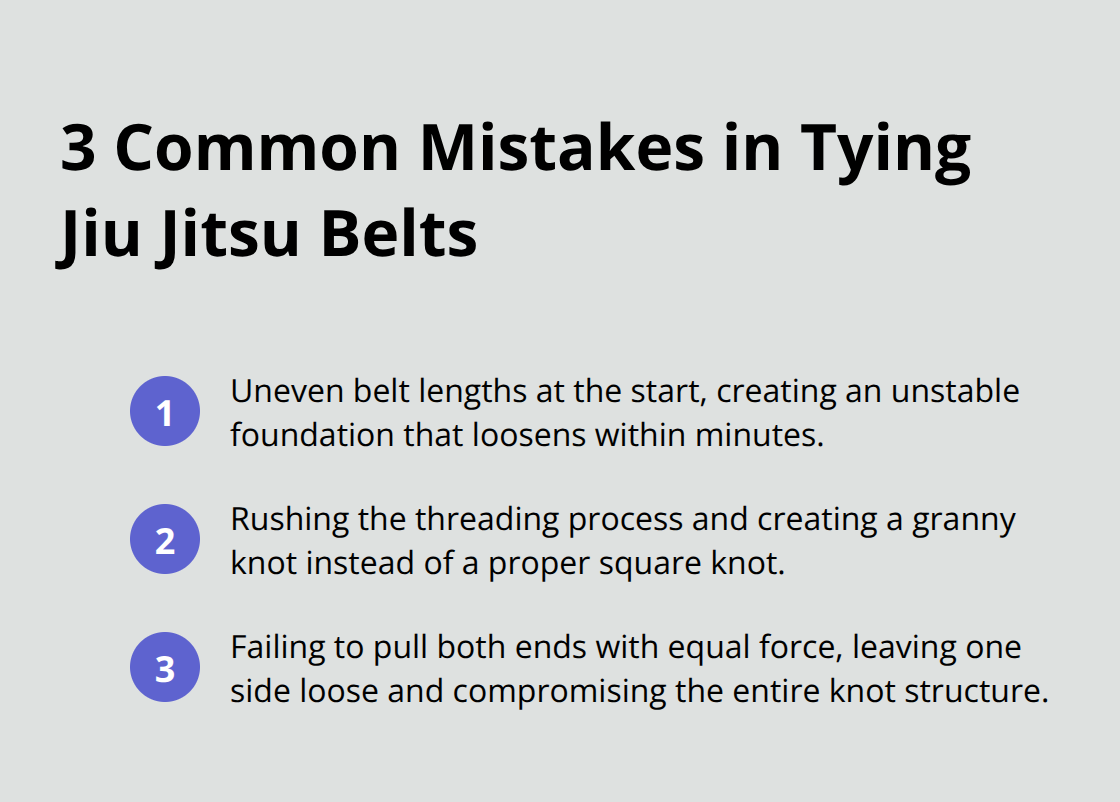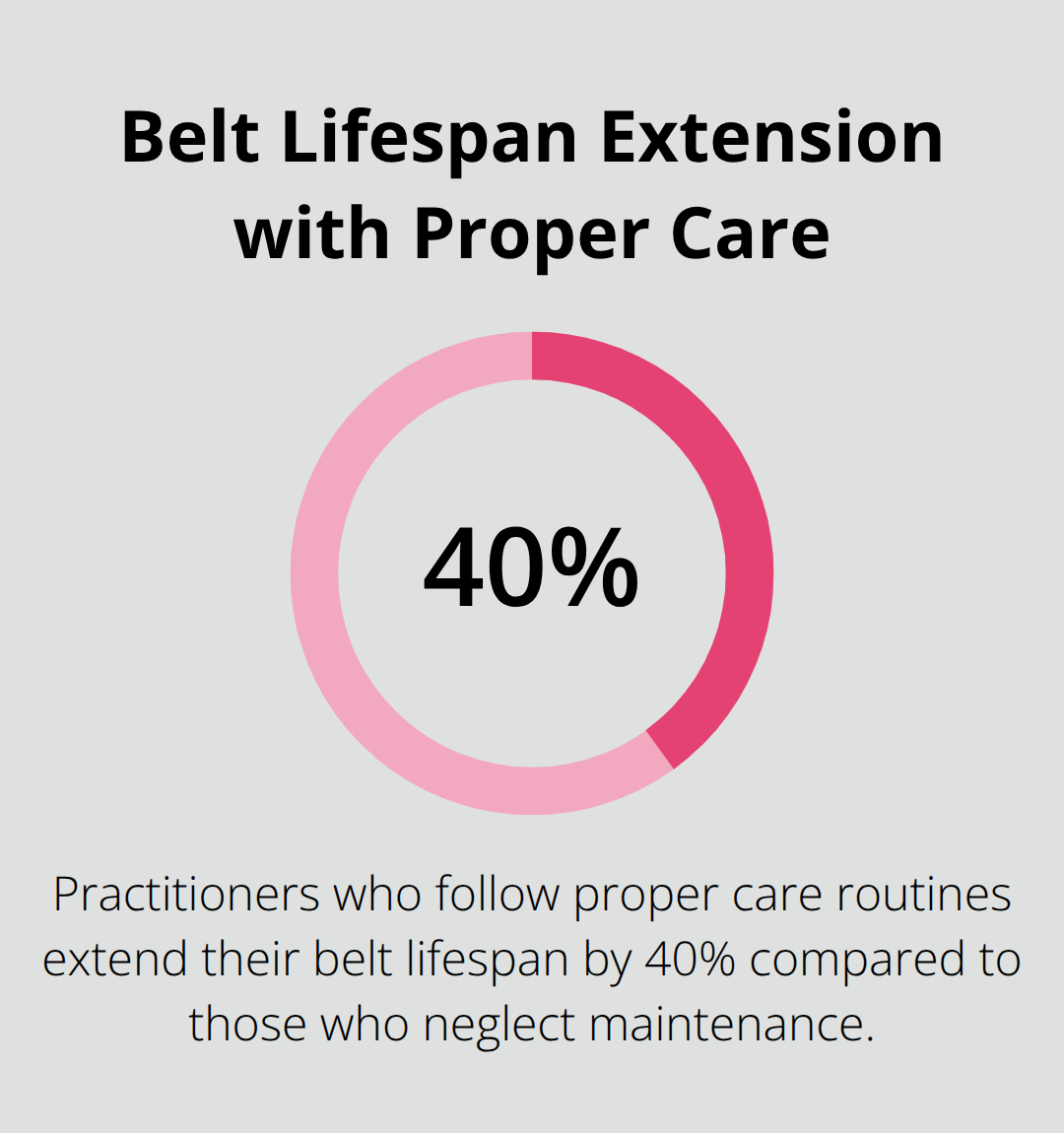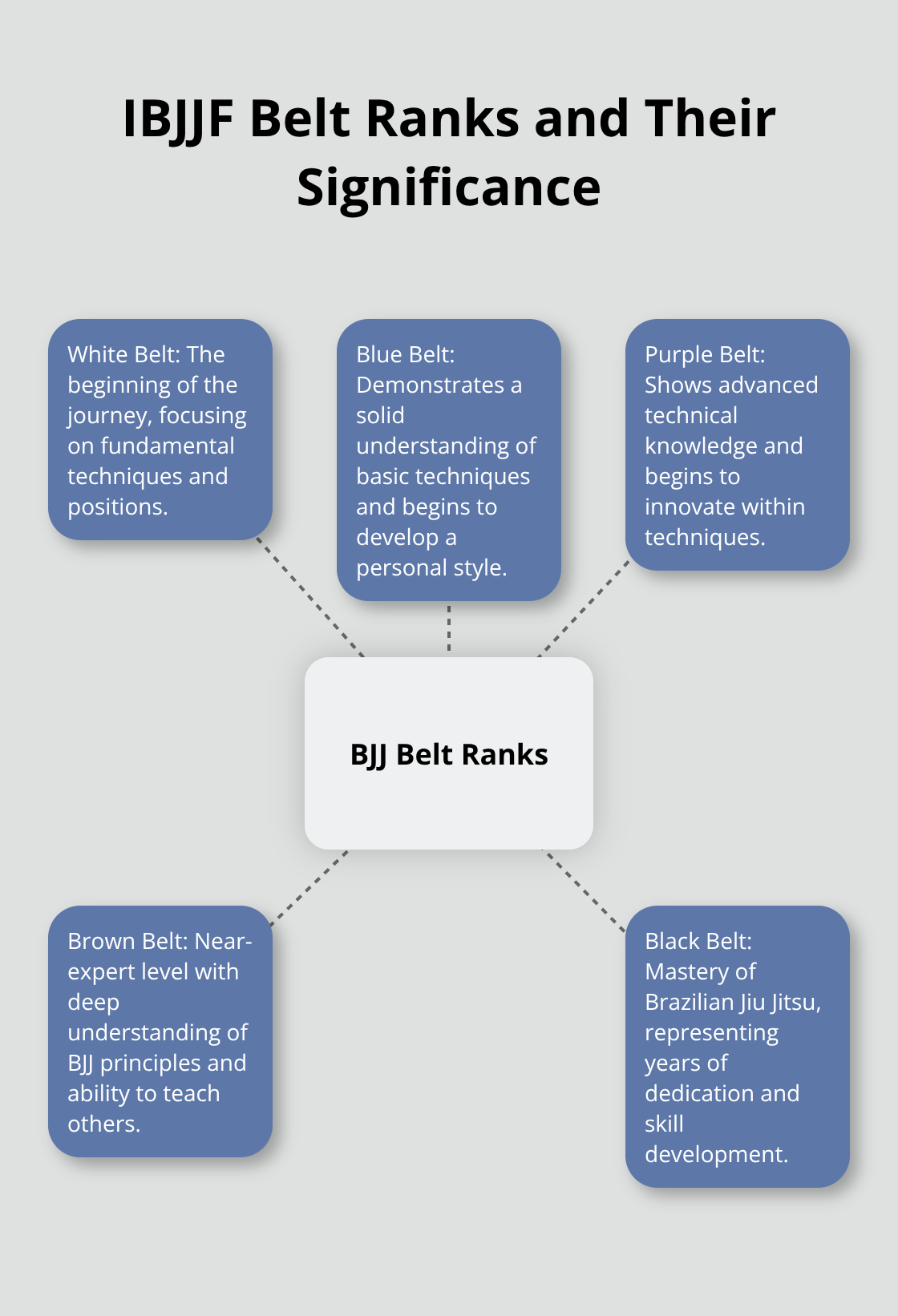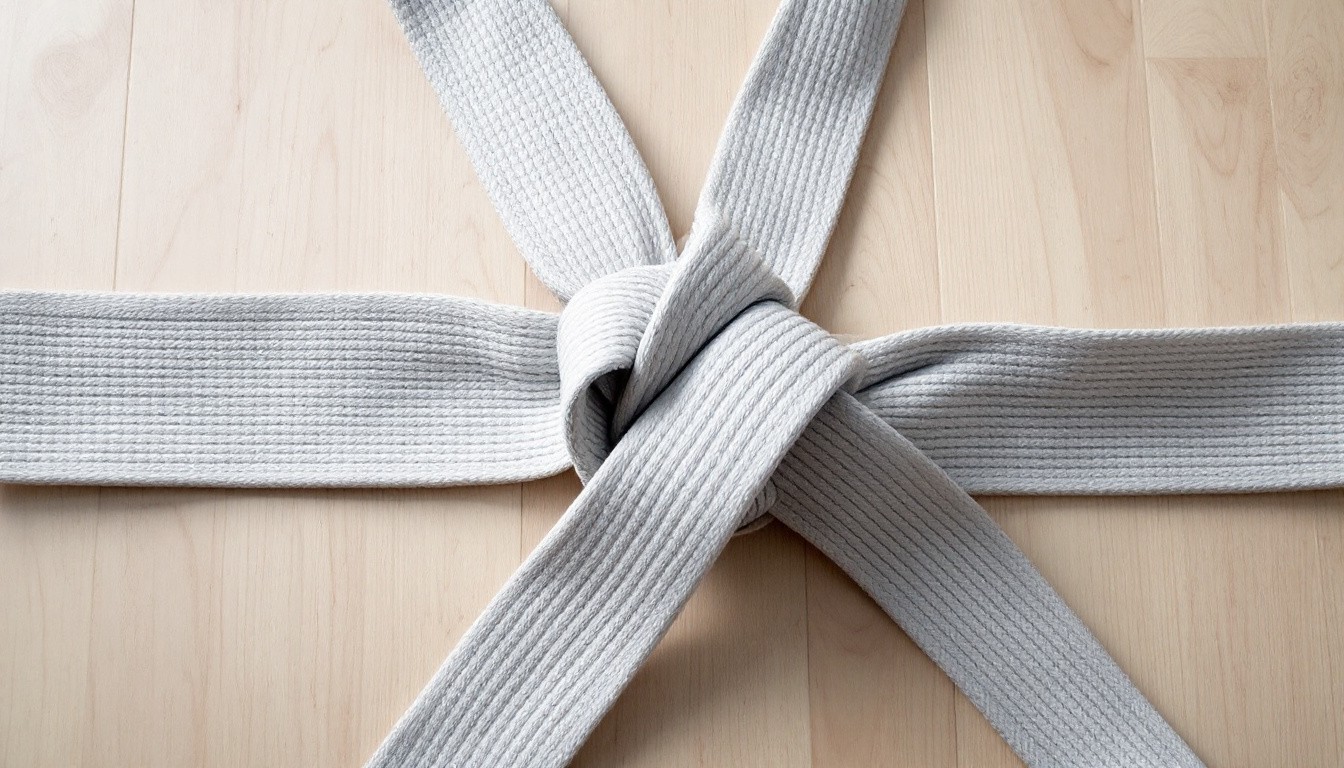Your belt represents years of training and dedication on the mats. Learning how to tie jiu jitsu belt properly shows respect for the art and prevents embarrassing moments during rolls.
We at Jiu jitsu see students struggle with loose belts that come undone mid-training. This guide covers proper tying techniques, maintenance tips, and the traditions behind your rank.
How Do You Tie a Belt That Stays Put
The Square Knot Foundation
The square knot remains the gold standard for belt tying in Brazilian jiu jitsu because it distributes pressure evenly and resists loosening under stress. Start by centering your belt on your waist with equal lengths hanging on both sides. Cross the right side over the left, then thread it underneath and pull through to create the first half of your knot. The second step requires you to cross the left side over the right and thread it through the loop you just created. Pull both ends tight simultaneously to lock the knot in place.

Common Mistakes That Guarantee Failure
Most practitioners make three critical mistakes that guarantee belt failure during training. The first mistake involves uneven belt lengths at the start, which creates an unstable foundation that loosens within minutes. The second error occurs when students rush the threading process and create a granny knot instead of a proper square knot. This weak knot slips under minimal pressure and embarrasses you mid-roll. The third mistake happens when you fail to pull both ends with equal force (leaving one side loose and compromising the entire knot structure).
The Five-Second Pull Test
Your belt should withstand a firm pull test before you step onto the mats. Grab both ends of your tied belt and pull outward with moderate force for five seconds. A properly tied belt shows no movement or loosening during this test. If your knot shifts or loosens, retie it immediately using the correct square knot method. This simple test prevents the frustration of stopping mid-training to retie your belt and maintains your focus during important drilling sessions.
Belt Positioning for Maximum Security
The position of your belt on your waist affects how well it stays secure throughout training. Place your belt at hip bone level rather than high on your waist or low on your hips. This natural waist position provides the most stable foundation for your knot and prevents the belt from riding up during movements. The belt should sit snugly but not restrict your breathing or movement (comfort matters as much as security).
Your properly tied and positioned belt sets the foundation for effective training, but maintaining that belt requires proper care and attention to detail.
How Should You Care for Your Belt
Wash Your Belt the Right Way
Your belt accumulates sweat, bacteria, and odors during every training session, which makes regular washing essential for hygiene and longevity. Wash your belt in cold water with mild detergent without bleach or fabric softeners (these chemicals break down cotton fibers and fade the color). Machine wash on a gentle cycle works better than hand wash because it removes more bacteria and sweat residue. Regular washing maintains proper hygiene standards for training environments. Air dry your belt by laying it flat or hanging it straight to prevent shrinkage and maintain its shape. Heat from dryers causes cotton belts to shrink up to 15% and weakens the fabric structure permanently.
Store and Replace Your Belt
Store your belt by rolling it loosely or hanging it on a hook rather than folding it, which creates permanent creases that weaken the fabric over time. Keep your belt in a dry, ventilated area away from direct sunlight to prevent color fading and fabric deterioration. Replace your belt when you notice frayed edges, significant fading, or when the fabric becomes too soft to hold knots securely. A quality cotton belt should last 18-24 months with regular training three times per week and proper care. Signs that demand immediate replacement include visible holes, complete color loss in sections, or inability to maintain a tight knot during training.
Extend Your Belt’s Lifespan
Practitioners who follow proper care routines extend their belt lifespan by 40% compared to those who neglect maintenance. Rotate between two belts if you train more than four times per week to allow each belt time to fully dry between sessions. Avoid leaving your belt in a gym bag for extended periods (trapped moisture creates bacterial growth and unpleasant odors). Clean your belt immediately after particularly intense training sessions or competitions where excessive sweating occurs.

Your well-maintained belt not only lasts longer but also reflects the respect and discipline that define martial arts traditions and etiquette. Correct storage and proactive care will keep your gear in top condition.
What Does Your Belt Really Mean
Respect for Rank and Journey
Your belt rank carries weight that extends far beyond colored fabric around your waist. Never touch another practitioner’s belt without permission as this violates fundamental martial arts etiquette and shows disrespect for their journey. Avoid adjustments, straightening, or handling someone else’s belt during training or conversation. This rule applies equally to higher and lower ranks because each belt represents personal sacrifice and dedication.
When your own belt comes untied during training, step off the mats to retie it rather than continue with a loose belt that dishonors your rank. The IBJJF belt progression shows the ranking system with time requirements for advancement between belts.
Proper Belt Display and Storage
Display your belt properly by never throwing it on the ground or leaving it in dirty gym bags for extended periods. Store your belt in a clean, designated space at home and carry it in a separate compartment of your gear bag (never mixed with sweaty clothes or equipment). Use your belt only for training purposes to maintain its integrity and symbolic value.
Traditional Etiquette Practices
When you enter or leave the training area, bow while wearing your belt to acknowledge the dojo and show respect for the art. These small acts of reverence build character and demonstrate your commitment to martial arts values that transcend physical techniques. For many practitioners, Brazilian Jiu Jitsu serves as more than just a workout, offering mental benefits alongside physical development. Each belt promotion becomes significant and worthy of respect given the substantial time investment required for advancement.

Final Thoughts
You master the art when you tie jiu jitsu belt with precision and respect for tradition. The square knot method delivers reliable security when you execute it correctly, while you avoid common mistakes like uneven lengths and rushed threading. These fundamentals prevent embarrassing belt failures during intense training sessions.
Proper belt maintenance through cold water washing and air drying extends your belt’s lifespan by 40% compared to neglected gear. You store your belt rolled or hung straight to prevent permanent creases that weaken the fabric structure. Your belt represents dedication, respect, and personal growth within the martial arts community (never handle another practitioner’s belt without permission).
These habits create discipline that extends beyond the training room. We at Jiu jitsu understand that proper belt care and etiquette reflect the values that make martial arts transformative. Whether you train at Souza Grappling Co. or another academy, consistent attention to these details demonstrates respect for the art and your fellow practitioners.




